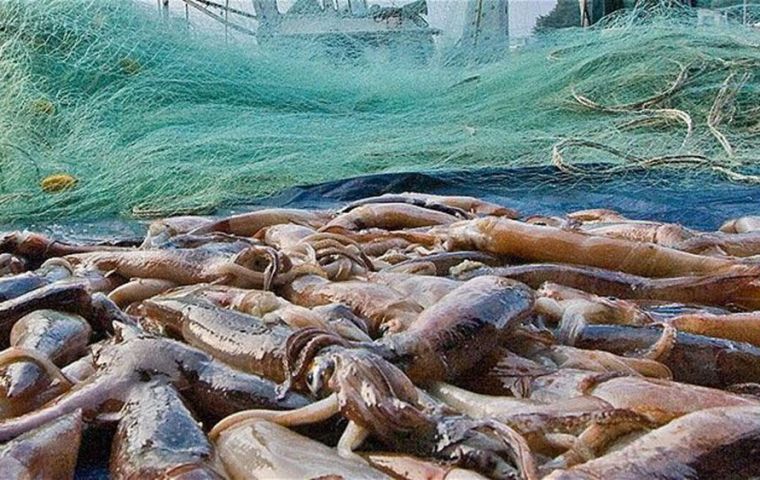MercoPress. South Atlantic News Agency
The cephalopods market faces tight supply and rising prices, FAO report
 The Falkland Islands fishery, the main supplier of the Spanish market has seen seasons cut short because of lack of sufficient biomass, and the size of squid
The Falkland Islands fishery, the main supplier of the Spanish market has seen seasons cut short because of lack of sufficient biomass, and the size of squid The global cephalopods market is under increasing strain as tight supply continues in early 2025. Reduced landings in key producing regions, adverse weather, and extra tariff barriers are contributing to upward pressure on cephalopod prices across major international markets, reports FAO’s Mohamed Hammi.
Since January 2025, European Union octopus import prices have been on the rise, although major wholesale markets like Paris, Brixham have yet to reflect dramatic spikes.
In 2024, imports of octopus in Japan stood at 39 933 tons, a drop of 1 percent compared to 2023. China, which remained the top supplier of octopus to Japan, reported an increase of 10.8 percent to 10 717 tons to that market. In contrast, Japan’s imports from Mauritania saw a significant 19.94 percent decrease to 9 715 tons compared to 2023 due to lower catches. Meanwhile, the Republic of Korea saw a modest 2 percent increase in total octopus imports in 2024, largely driven by higher volumes imported from Viet Nam. In the United States of America, octopus prices are expected to rise further as a result of implementation of tariffs on imported products. These measures will likely impact major exporters such as Spain and Indonesia.
At the beginning of 2025, global prices for key commercial squid species rose to their highest levels in several years, driven by reduced catches in Peru’s coastal waters and the Indian Ocean.
China’s squid market displayed mixed trends. Prices for squid from the Southeast Pacific and Indian Ocean increased sharply due to tight supply, while prices remained stable for Southwest Atlantic and Northwest Pacific squid. Chinese processors are contending with depleted inventories and robust factory demand.
In terms of squid and cuttlefish trade, China experienced a significant 15.4 percent decline in imports, primarily due to reduced imports from several countries, while its exports increased by 8.7 percent, indicating robust global demand.
In Spain, overall imports fell by 1.8 percent, though sourcing from China and the Falkland Islands saw notable increases, helping to cushion the decline. The United States of America recorded a 4.15 percent rise in imports, Argentina, the largest supplier to the United States of America market, increased its shipments by 12.99 percent. Meanwhile, the Republic of Korea saw a 9.4 percent decrease in imports, with sharp reductions from Peru, partially offset by an increase in shipments from China.




Top Comments
Disclaimer & comment rulesCommenting for this story is now closed.
If you have a Facebook account, become a fan and comment on our Facebook Page!